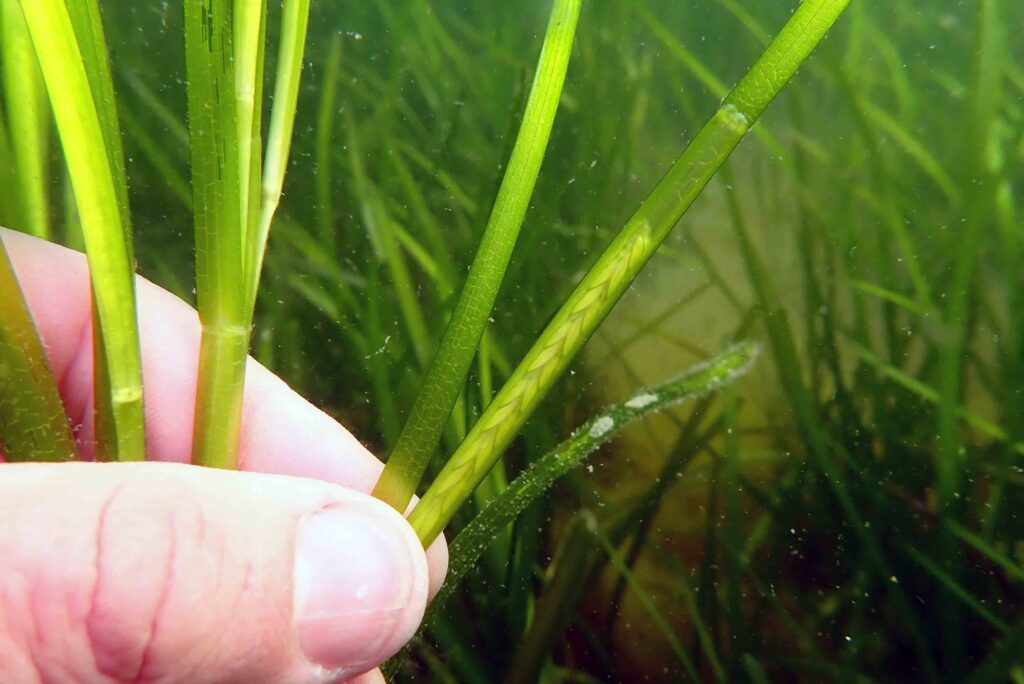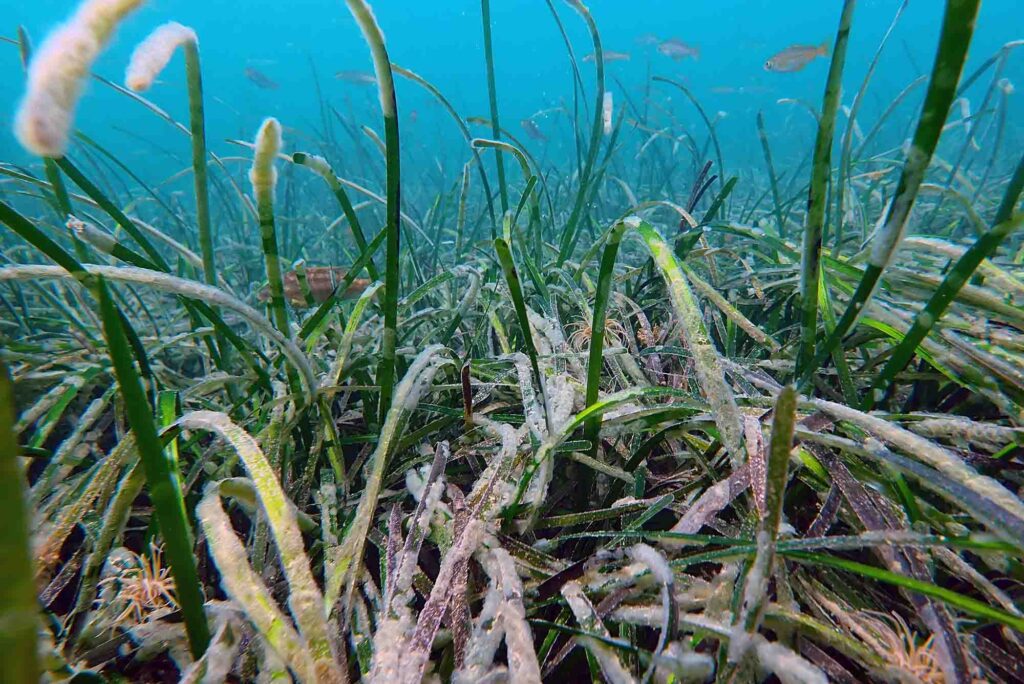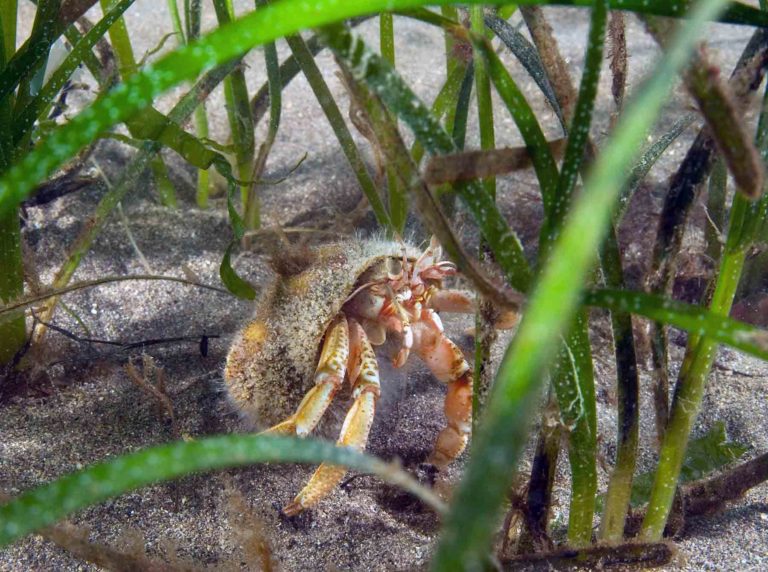A three-year project to restore Cornish seagrass meadows has been announced today (28 July) during what is The Wildlife Trusts’ National Marine Week.
Implemented by Cornwall Wildlife Trust (CWT) with funding from clothing brand Seasalt Cornwall, the new “Seeding Change Together” project aims to restore intertidal seagrass in the Fal estuary.
Seagrass, the world’s only flowering plant able to live in seawater, plays a critical role in absorbing and storing coastal “blue carbon”. Marine experts will be evaluating a range of previously untested restoration methods that can be scaled up in the fight against climate change.

Seeding Change Together will be based on the Roseland peninsula at CWT’s Fal Ruan nature reserve, which supports dwarf eelgrass (Zostera noltei), one of the two seagrass species found in Cornish waters. Such intertidal seagrass grows in locations where it spends low tide out of the water, unlike common seagrass (Zostera marina), which as a subtidal species remains submerged.
University of Exeter researchers have discovered that the shorter dwarf eelgrass is in fact twice as good as subtidal seagrass at storing carbon. However, most of Cornwall’s seagrass beds died from disease in the 1930s and dwarf seagrass has been far slower to recover, with few areas such as Fal Ruan where it remains in reasonably good condition.
An initial research and development phase involving on-site and aerial surveys and water-quality tests will be followed by thousands of seeds being collected and planted by volunteers.
CWT hopes that its conservation efforts will expand the size of the reserve’s seagrass bed, and that additional restoration locations can be identified in the River Fal.
“We want to see seagrass habitats in Cornwall restored towards their historical levels and for seagrass to be present in all locations that could support it,” says CWT’s marine conservation officer Matt Slater. “This partnership with Seasalt will allow us to make headway towards that goal.”

Seagrass provides a home to hundreds of marine species, supporting fisheries and protecting shorelines from erosion, says CWT. Despite covering less than 1% of the ocean floor, seagrass beds are responsible for 15% of its total carbon capture, but the UK has lost up to 92% of its seagrass meadows in the past 100 years.
The pilot project could lead to large-scale seagrass restoration and monitoring throughout Cornwall, supported by the county’s Your Shore Network of 17 volunteer-led marine conservation groups co-ordinated by CWT. The trust will liaise with Cornwall Council, harbour authorities and academic bodies to ensure that the Seeding Change Together project aligns with wider blue carbon work in the county.
National Marine Week (actually a fortnight, from 23 July to 7 August) is The Wildlife Trusts’ annual celebration of the marine environment. CWT’s marine team and the Your Shore Network run free events including underwater snorkels, rockpool rambles and beach cleans.

Hidden in plain sight
Meanwhile, what now appears to be one of the biggest seagrass meadows in UK waters was discovered recently off Cornwall.
Spanning 5km and covering an area of 290 hectares (a football pitch measures 1 hectare), the subtidal bed was identified in Mount’s Bay as the result of a Cornwall Council project to explore the potential of ecosystems including seagrass, mudflats, salt marsh, kelp and maerl (ancient coral reef) to capture and store carbon.
The council had commissioned the University of Exeter and environmental researcher Ecospan to conduct surveys between Penzance and Falmouth. In Mount’s Bay this revealed what is certainly Cornwall’s biggest known seagrass bed, equating to 3.4% of all known seagrass areas in the UK.
“These findings have reignited interest across Cornwall for the potential discovery of new seagrass beds using echo-sound technology,” says the council.
A total of 172 hectares of seagrass were also found in the Fal & Helford estuaries, described as one of the most healthy and productive beds in the UK. The council stated that the discoveries would aid Cornwall in its aim to become carbon-neutral by 2030.
Plymouth-based charity the Ocean Conservation Trust recently launched the Blue Meadows project in a bid to protect 10% of all UK seagrass over the next five years, as reported on Divernet – and as new meadows are discovered, that task appears to be growing.
“The seagrass bed in Mount’s Bay is totally new to science,” confirms CWT’s Matt Slater. “There were some records from inshore sites in the bay such as near Long Rock, the Mount and off Skilly, but the large area of seagrass across the centre of the bay and especially around Penzance harbour and Newlyn harbour was previously unknown, and not included in previous estimates of area covered.”
Also on Divernet: World’s Biggest Plant Revealed in Shark Bay, Divers Shift Seagrass Seeds And Nets, We Should Fight To Protect UK Seagrass, Seagrass Damage A Double Whammy

